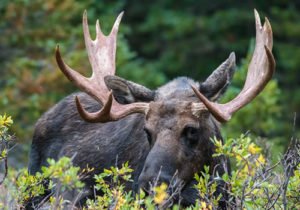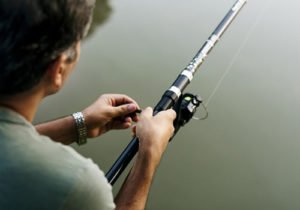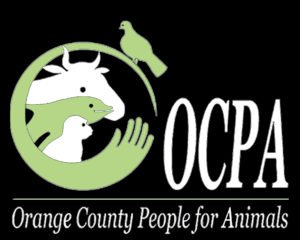There once was a time when most Americans needed to hunt to put food on the table, but hunting today is a recreational pastime, and worse: waterfowl, pheasant and dove hunting are no more than shooting at living targets.
Some hunting is done solely to acquire trophies or to see who can kill the most; some is no more than shooting tame, confined animals.
In all cases, sport hunting inflicts undeniable cruelty – pain, trauma, wounding, and death – on living, sentient creatures.
More than 100 million animals are reported killed by hunters each year. That number does not include the millions of animals for which kill figures are not maintained by state wildlife agencies.
The vast majority of species that are hunted – waterfowl, upland birds, mourning doves, squirrels, raccoons, rabbits, crows, coyotes, etc. – provide minimal sustenance and do not require population control.
 Hunters have strived for decades to convince the American public that hunting is good for wildlife and good for society. But the holes in their arguments are becoming increasingly apparent, as is the magnitude of their waste, cruelty and destruction. More than that, sport hunting – the killing of wild animals as recreation – is fundamentally at odds with the values of a humane, just and caring society.
Hunters have strived for decades to convince the American public that hunting is good for wildlife and good for society. But the holes in their arguments are becoming increasingly apparent, as is the magnitude of their waste, cruelty and destruction. More than that, sport hunting – the killing of wild animals as recreation – is fundamentally at odds with the values of a humane, just and caring society.
Canned Hunting
Canned hunting is the killing of an animal in an enclosure to obtain a trophy. Clients pay large sums of money to participate in canned hunts, which take place in a confined area from which the animal cannot escape. The victims are exotic (non-indigenous) animals, including several varieties of goats and sheep; numerous species of Asian and African antelope; deer, cattle, and swine; and bears, zebra, and sometimes even big cats.
 Many groups that support hunting scorn canned hunting for its unsportsmanlike practice. The animals are sometimes tame exotic mammals; these animals do not know to run from humans. Animals may be set up for a kill as they gather at a regular feeding area or as they move toward a familiar vehicle or person. Once a pattern is established, even the most wary antelope can be manipulated effectively, guaranteeing a kill.
Many groups that support hunting scorn canned hunting for its unsportsmanlike practice. The animals are sometimes tame exotic mammals; these animals do not know to run from humans. Animals may be set up for a kill as they gather at a regular feeding area or as they move toward a familiar vehicle or person. Once a pattern is established, even the most wary antelope can be manipulated effectively, guaranteeing a kill.
The sale of exotic mammals to canned hunts is big business for private breeders, animal dealers, and disreputable zoos including petting zoos. The indiscriminate breeding of captive exotic animals produces surplus animals, which are then sold, traded, or otherwise disposed of to exhibitors, circuses, animal dealers, game ranches, or individuals. Hunt operators can purchase animals directly through dealers or at auctions.
Most states allow canned hunting. Only California, Indiana, Maryland, Nevada, New Jersey, North Carolina, Oregon, Rhode Island, Wisconsin, and Wyoming have laws prohibiting the hunting of exotic mammals in enclosures. Oregon’s Fish and Wildlife Commission, responding to public disgust for canned hunting, passed a ban on the practice.
At this time, no federal law governs canned hunting. The Animal Welfare Act does not regulate game preserves, hunting preserves, or canned hunts. Although the Endangered Species Act protects species of animals listed as endangered or threatened, it does not prohibit private ownership of endangered animals and may even allow the hunting of endangered species. Federal legislation regarding canned hunts is anticipated in the near future.
Trophy Hunting
Every year, tens of thousands of wild animals, representing hundreds of different species, are killed by American trophy hunters in foreign countries. The heads, hides, tusks, and other body parts of most of these animals are imported to the United States by the hunters.
 Many animals imported as trophies are members of species protected under the Endangered Species Act (ESA), such as leopards and African elephants. The ESA allows importation of endangered and threatened species only for scientific research, enhancement of propagation, or survival of the species. However, the U.S. Fish and Wildlife Service (FWS), which implements the ESA, has broadly interpreted the term “enhancement” to include trophy hunting of threatened species. While the FWS has rarely allowed the importation of endangered species as trophies, this has not stopped hunters’ trophies from making their way across the U.S. border in the guise of scientific research.
Many animals imported as trophies are members of species protected under the Endangered Species Act (ESA), such as leopards and African elephants. The ESA allows importation of endangered and threatened species only for scientific research, enhancement of propagation, or survival of the species. However, the U.S. Fish and Wildlife Service (FWS), which implements the ESA, has broadly interpreted the term “enhancement” to include trophy hunting of threatened species. While the FWS has rarely allowed the importation of endangered species as trophies, this has not stopped hunters’ trophies from making their way across the U.S. border in the guise of scientific research.
While the trophy hunting of endangered and threatened species attracts a great deal of attention, the vast majority of wild animals that American hunters kill and import—such as impala, black bears, common zebra, warthogs, eland, African buffalo, African lions, giraffes, and baboons—are not protected under the ESA or any other domestic law. If the foreign government allows the animals to be killed, as many do, the American hunter can import the trophies.
Trophy hunting is an elitist hobby, requiring tens of thousands of dollars to participate in each hunting trip. Many trophy hunters belong to organizations which promote and enable the so-called “sport,” such as Safari Club International (SCI). SCI also conducts elite competitions that provide trophy hunters with a playing field so that they can compete with others to kill the most animals of a particular type.
In the U.S., there are approximately 50 million licensed recreational anglers who fish in fresh water (rivers), salt water (oceans) or lakes every year. This generates about $48 billion in retail sales.
 Sport fishing typically involves fishing with a rod and reel. Common targeted fish species include salmon, steelhead, sturgeon, and bass.
Sport fishing typically involves fishing with a rod and reel. Common targeted fish species include salmon, steelhead, sturgeon, and bass.
Studies show that fish experience pain and fear similar to mammals. So in addition to the slow death by suffocation they endure once removed from their oxygen supply (the water), they also feel the pain from the hook.



